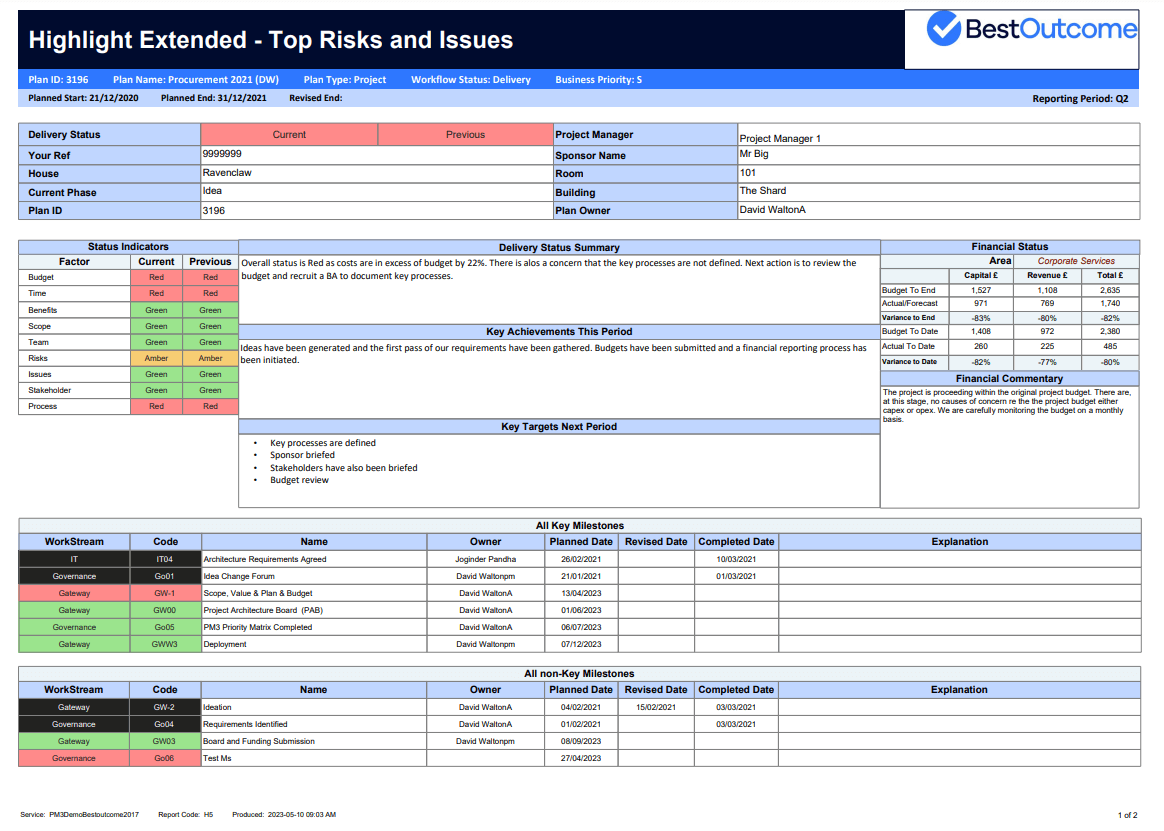David Walton
In this blog, BestOutcome PMO expert and Director David Walton explains how to make a business case for PMO tools and dramatically increase the odds of success for you and the NHS.
In the NHS, there is drive to be more efficient and deliver against NHS England priorities, which include:
In December 2015 the NHS shared planning guidance 16/17 – 20/21 outlined a new approach to help ensure that health and care services are built around the needs of local populations. To do this, every health and care system in England will produce a multi-year Sustainability and Transformation Plan (STP) showing how local services will evolve and become sustainable over the next five years.
This will ultimately deliver the Five Year Forward View vision of better health, better patient care and improved NHS efficiency.
At Bestoutcome we work with many NHS organisations including commissioners and providers. All of these organisations are delivering significant change to meet NHS England’s vision. Some of this change is relatively small and localized, but increasingly the change consists of large-scale transformation programmes.
Large-scale change equates to both big cost and also big potential benefits. So it is essential that these change programmes are managed professionally to ensure that the costs do not run out of control, and also that the expected benefits are realised.
This is even more important in the NHS due to cost challenges and the increasing demands on the NHS by the ageing population
Transformational Programmes Need Tools Designed to Manage Transformational Programmes
It seems obvious, but it is essential that the tools used to manage these programmes are designed to support programmes. Too often we see large-scale programmes being managed by spreadsheet, Word and PowerPoint, or MS project.
I get the argument about expensive programme management tools but when you weigh up the cost of these programmes, and the potential prize that a tool like this is designed to deliver, it seems like a good PMO tool would be a very sensible investment.
I’ve outlined below the reasons why a proven NHS programme tool should be used to help you make the business case to transform your PMO.
How it is progressing against its high-level goals? It also needs to show low level project detail. Both high-level and detailed level views are needed.
A programme will have many resources assigned to it who need to understand the plans, their tasks, risks, issues and actions. MS project or Excel is a single user tool. If someone uses Excel or Project, it is effectively locked so that other people cannot access it. If MS Project is used for each individual project it is non-trivial to add these individual plans to create an overall programme plan.
This is similar to my first point where you need to be able to show senior stakeholders the risks that are true programme risks, i.e. if these risks become issues then they can have a material effect on the programme and not just the project.
If you are storing projects in excel or MS Project it is very difficult to add these up to get programme level reports (a tool like PM3 has a set of programme reports that need no manipulation or ‘adding-up’).
In a programme there are likely to be a number of milestones that are dependent on other milestones in other projects, either within the same programme of outside the programme. PM3 can not only create these dependencies but also run reports showing problems with delivery dates if a dependent milestone is delayed.
This is very hard if not impossible to do in Excel.
NHS programme costs can run into the millions of pounds and these are naturally built up from the underlying project budgets. Having to calculate programme budgets from adding excel sheets can be time consuming and error-prone. A programme tool like PM3 will add these projects costs automatically to give a programme view
There are many more reasons why a proper programme management tool needs to be used to manage NHS programmes. The central point to make is that a tool like PM3 will have a payback of less than 6 months. It will also save time in reporting and creating programme plans. But the real benefit though is the transparency of information.
All stakeholders can view programme and project information in real-time and view programme status, progress reports, programme finances and more. A project or a programme that is in difficulty is easily identified by the transparency of information. This can lead to early intervention to bring the project back on track.
The longer a project is allowed to flounder, the bigger the cost over-run and the greater the danger of non-delivery of the benefits.
“PM3 supports outcome-based project management and gives us an oversight of all 120 current projects. We can see where projects are up to and can determine how projects link. This allows us to pre-empt risks and offer advice and help to those running a project.”- Linda Stannard, Head of PMO, NHS Camden



“The NHS cannot afford transformational programmes to either not deliver or have significant cost over-runs. That’s why a tool like PM3 that is designed to manage transformational programmes is not a luxury but an essential. You must use the tool that is designed for the right purpose.” – David Walton

Our products help you deliver successful change programmes and projects by always focusing on the overall business outcomes. Find out how our products can help you.
Tell me more Request a DemoIn the NHS, there is drive to be more efficient and deliver against NHS England priorities, which in...
Read more >Here you will find how RAGs play a crucial role in both project reporting and organizational leaders...
Read more >